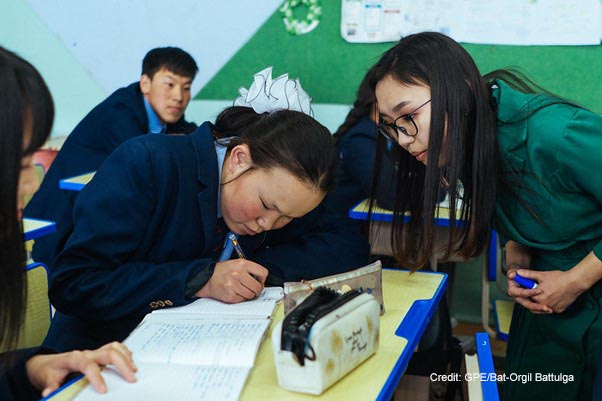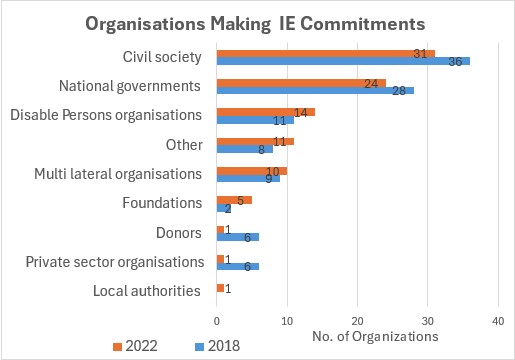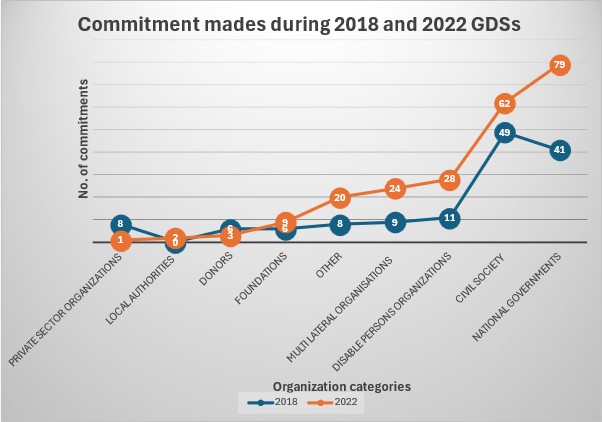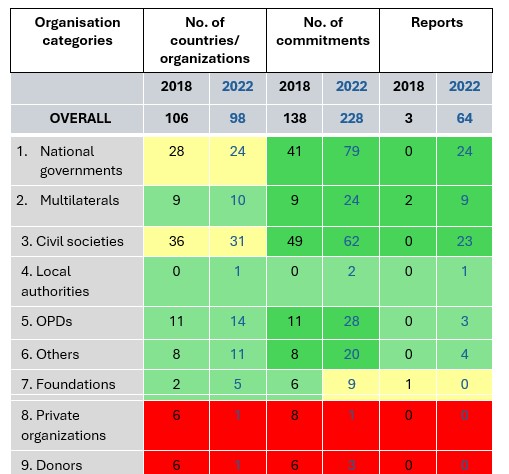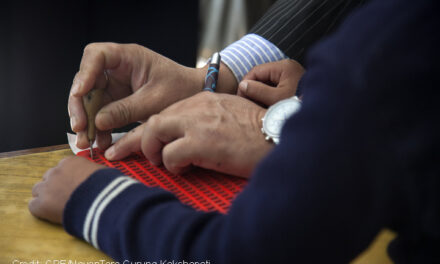This blog is written by Nidhi Singal and Thilanka Wijesinghe, University of Cambridge. It provides findings of an analysis undertaken to explore the commitments on disability-inclusive education made at the 2018 and 2022 Global Disability summits. The blog was originally published on the Global Partnership for Education website on 12 November 2024.
Since 2018, the two Global Disability Summits have provided a strong platform to amplify the voices of persons with disabilities. These events have each attracted over 200 stakeholder groups to advocate for disability inclusion in development cooperation.
A key component of the summits is encouraging stakeholders such as governments, UN agencies, civil society including organisations of persons with disabilities (OPDs), the private sector, academia, foundations and others, to make concrete commitments to implement the rights of persons with disabilities, as enshrined in the UN Convention on the Rights of Persons with Disabilities (CRPD).
These commitments are essential for systematically including disability in development cooperation and driving action and accountability among stakeholders in promoting the rights and dignity of persons with disabilities globally.
To manage these commitments, the Global Disability Summit Secretariat oversees an online portal where stakeholders can submit formal commitments, track progress, and share reports on implementation, fostering transparency and accountability.
This blog presents findings of an analysis undertaken to explore the commitments on disability-inclusive education made at the 2018 and 2022 summits. The analysis aimed to address three key questions:
- What has been the nature and number of commitments made at the last two Global Disability Summits?
- How has the nature of commitments evolved over the last two summits?
- What indicators of quality are available to assess the uptake and delivery of these commitments?
Nature and number of commitments: Growing interest in disability-inclusive education
From 2018 to 2022, the number of organisations making a commitment dropped from 106 to 98, however the total number of commitments increased from 138 to 228, indicating an increase in the focus on disability-inclusive education within organizations.
The Secretariat groups the organisations submitting commitments under nine categories: civil society, national governments, OPDs, multilaterals, foundations, donors, private organisations, local authorities, and a miscellaneous “others” category.
Number of organisations making the inclusive education commitments
Number of commitments made by the organisation groups
Across the two summits, civil society organisations made the highest number of commitments, followed by national governments and OPDs. Though in relation to the number of commitments being made, particularly in 2022, we see a notable increase in the number of disability-inclusive education commitments made by national governments and civil society.
In 2022, we also see a notable increase in commitments from multilateral organisations and foundations. In stark contrast, private and donor organisations made fewer commitments.
Notable trends
Only 12 countries, mostly low and middle income, which made commitments in 2018 also made commitments in 2022, while 12 new countries, mostly higher-income, made commitments in 2022. This shift might indicate changing priorities and participation trends at the national level.
What are the commitments about?
Our analysis of the type of commitments highlights nine key themes.
Commitment themes identified in 2018 and 2022 (*Theme identified only in 2022)
|
1. Capacity building |
2. Advocacy for inclusive education and disability awareness |
3. Policy, standards and regulations |
|
4. Inclusive education sector planning |
5. Partnership building and collaborative work for inclusive education |
6. Developing physical infrastructure (accessibility and resources) |
|
7. Inclusive education and disability-related research |
8. Promoting evidence-based practices and knowledge sharing* |
9. Funding for inclusive education |
Across the two summits, capacity building, advocacy and awareness, policy standards and regulations, and sector planning, were most evident. The least number of commitments were around funding and research.
A closer analysis of the commitments is noteworthy, and highlights the following:
- Advocacy and disability awareness commitments went up (from 16 to 43), reflecting a growing emphasis on raising awareness and promoting inclusive education. Here there was an emerging emphasis on including voices of persons with disabilities.
- Capacity building commitments remained the same (60), however their nature changed from emphasis on training teachers to also supporting OPDs and communities.
- Inclusive education sector planning extended to planning for emergency situations, largely accounting for learnings from the pandemic. This also included an increased focus on infrastructure development.
- Commitments under ‘policy, standards, and regulations’, in 2022 had more emphasis on overseeing and advocating for the implementation of the plan by relevant ministries.
- A new focus on promoting evidence-based practices and knowledge sharing emerged in 2022.
Assessing quality and delivery of commitments: lack of information
The only indicator available on the quality and delivery of commitments are reports submitted by organisations and made public by the Global Disability Summit Secretariat. In 2018, only three reports were submitted, but this increased to 64 in 2022, suggesting possibly greater focus on monitoring.
However, the reports do not provide detailed information on the outcomes of the commitments. Thus, issues of monitoring, accountability and impact in relation to the summit commitments remain very weak.
Reflecting on the summit commitments
The table below brings together different dimensions of the above analysis to amplify where things are going well (green), areas which need caution and intervention (amber), and finally areas of concern, which require urgent attention (red).
Summary of the commitments in Global Disability Summits in 2018 and 2022
Overall, what emerges clearly is the lack of engagement from private organisations and donors, both in relation to the very small numbers who are engaging with these issues, but also the significant reduction over the last two summits.
Recommendations for strengthening disability-inclusive education commitments
- Build knowledge around formulating quality commitments
- Ensure commitments are inclusive, evidence-based, and aligned with measurable outcomes.
- Understand that making commitments is a process and not simply a one-off event, and hence requires buy-in from all relevant stakeholder groups.
- Empower persons with disabilities and their organisations to actively shape, monitor and advocate for commitments.
- Develop a framework to evaluate the quality of commitments based on factors like policy impact and stakeholder involvement at the point of submission.
- Increase accountability
- Establish accountability mechanisms like public reporting and audits to ensure delivery of commitments.
- Emphasise outcome-based reporting, focusing on tangible impact.
The results of our analysis are being shared at different forums, including the Regional Pre-Global Disability Summits, such as the one in Jordan, ahead of the 2025 Global Disability Summit in Berlin, in order to raise awareness around how these commitments can become strong tools for accountability and advocacy.
This blog is based on an analysis presented at the Pre-Global Disability Summit Workshop on Disability-Inclusive Education hosted at Hughes Hall College, University of Cambridge, with participants from the World Bank, UNICEF, CBM, and IDA, on 17-18 September 2024.

